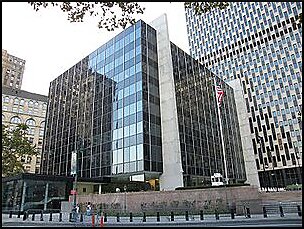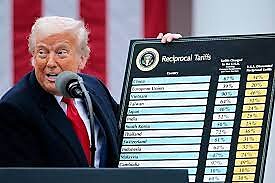Nearly 150 years ago, as the nation’s Civil War dragged on, President Lincoln grew increasingly frustrated with the Union Army’s generals. Lincoln viewed America’s military leaders as too passive and too reluctant to use force properly and effectively. From Lincoln’s perspective, the Union troops typically engaged in brief skirmishes and retreats that resolved little or nothing. At one point, Lincoln became so irritated with General McClellan’s failure to engage the Confederacy’s military forces that he sent McClellan a telegram: it read “If General McClellan does not want to use the Army, I would like to borrow it for a time, provided I could see how it could be made to do something.”
Cato’s legal scholars sometimes develop similar frustrations: we regularly watch what the courts do—and don’t do—and one troubling trend we see is that, sometimes, what courts fail to do is their job. The judiciary is supposed to serve as the bulwark of our freedoms: courts serve that function by requiring everyone to obey the law. When courts decline to engage—when they fail to affirm and protect our freedoms—that is a significant institutional failure.
Regrettably, anyone who pays attention to the courts can spot occasional instances of judicial passivity. This is bad news for those of us who support judicial engagement. (To paraphrase what another president said a century after Lincoln: we’re all Neilyans now.) So it comes as good news, and a pleasant surprise, to see last week’s decision on tariffs from the Court of International Trade: it appears that, at least on this subject, the judiciary is finally flexing its muscles.
Cato’s president, Peter Goettler, recently blogged about the excellent work of co-counsel and Cato scholar Ilya Somin in VOS Selections v. United States. I write to explain the consequences of Ilya’s victory in a bit more detail. The root of the problem lies in two kinds of texts: statutes (like the International Emergency Economic Powers Act of 1977, or IEEPA) and the US Constitution.
The Constitution assigns Congress the sole and exclusive power to lay and collect tariffs and to regulate commerce with foreign nations. That literal reading of the Constitution demonstrates that Congress has the power to impose tariffs, but the president has no such power. However, the IEEPA hands the president some power to regulate some extranational transactions. But the statute explains that such powers “may only be exercised to deal with an unusual and extraordinary threat with respect to which a national emergency has been declared.” More particularly, the IEEPA gives the president the power to “regulate … importation” in order to “deal with any unusual or extraordinary threat … to the national security, foreign policy, or economy of the United States, if the president declares a national emergency with respect to such threat.”
That apparently is the theory of Trump’s Liberation Day: The “unusual and extraordinary threat” identified by the president is trade deficits en masse, and the president can “deal with” this threat by declaring that our nation’s trade with every single country on earth is a national emergency; more precisely, he can “deal with” this threat by using his power to regulate imports so as to place tariffs on them. But the theory of Liberation Day seems inherently implausible: how can it be that every country’s trade policy is simultaneously extraordinary—or even simultaneously unusual? If there is something that is identified as unusual and extraordinary, this implies that some other things must necessarily be usual and ordinary.
This logical inference raises a relevant question: Surely there are some usual and ordinary states of affairs that would not justify a presidential declaration of emergency? If the president is never disallowed from making such declarations, it would imply that things are never usual or ordinary, because by definition things can’t be unusual or extraordinary 100 percent of the time.
That’s a sketch of the logical argument that demonstrates there must be some limit to presidential IEEPA powers. What the court did was to translate that logical argument into law by using a similar legal principle based chiefly in administrative law. Namely, the limit to IEEPA powers that the court invokes rests on the idea that there has to be an “intelligible principle” that limits the scope of delegated authority.
To put it another way, what the court decided was that the unlimited delegation of tariff authority to the president would necessarily be unconstitutional; any delegation of such authority must therefore be limited. Much of the court’s analysis rests on the idea that the language of the statute must therefore be examined to determine what the statute’s limits are.
Notably, the government—in the course of arguing for a broader understanding of executive powers—took the position that courts are inherently incapable of judging whether anything is an “unusual and extraordinary threat” or not, arguing that the determination of such questions is nonjusticiable. Of course, there is a live doctrine that some kinds of disputes are nonjusticiable. But as the court notes, it’s a stretch to apply this doctrine to reach the conclusion that courts cannot use or rely on the traditional tools of statutory construction.
Furthermore, the court also provided a parallel holding: it found that some of the president’s tariffs fail to “deal with” the threats to which they purportedly respond. In other words, that means that when somebody “deals with” something, there must necessarily be “a direct link between an act and the problem it purports to address,” in the sense that a tax deals with a budget shortfall by increasing revenue. But according to the court, the tariffs don’t “deal with” the problems that the tariff orders identify: Trump’s assemblage of tariffs fails to “evidently relate” to the criminal behavior that the tariff orders complain about—drug and drug precursor trafficking, sex trafficking, money laundering, and so forth.
As the court noted, it seems that the government wants to create “pressure” or “leverage” on other countries to solve the problems that the government has identified—and that argument “effectively concedes that the direct effect of the country-specific tariffs is simply to burden the countries they target.” That means that if the court accepted the government’s argument, it would prove too much: as the decision says, if “deal with” can mean “impose a burden until someone else deals with” it, then “everything is permitted.” Because “everything is permitted” cannot be the right interpretive consequence, the zone of what the concept of “deal with” could extend to cannot be indefinitely broad in the way that the government would like it to be.
It is also important to understand the court’s holding from the perspective of precedent. Fifty years ago, the US Customs Court (the precursor to the Court of International Trade) found that the law allows the president to impose some tariffs. It appears that last week’s decision is driven by the Court’s wish to acknowledge that the Court has some tariff authority under IEEPA—but that this authority has to be limited. It appears that the court felt bound by these cases, but the opinion is careful to distinguish between the limited tariffs that were judicially approved a half-century ago and the unlimited Trump tariffs that it struck down. Additionally, the court emphasized the strategic nature of the trafficking tariffs when it explained that those particular tariffs failed to “deal with” trafficking, and so, under IEEPA, their use as leverage or as part of a negotiating strategy was disallowed.
Roughly 24 hours after the district court’s decision, it was put on hold: the Court of Appeals for the Federal Circuit stayed the decision for a few days. Shortly, legions of lawyers will relitigate this issue. I hope that the appellate court will come to the same conclusion that the district court did below. A second decision striking down IEEPA tariffs was also issued last week. That decision’s logic was simpler, in that it found that presidential use of IEEPA’s powers was unconstitutional as such. Although that decision was narrower in scope (it only applies to the two plaintiffs that brought the case), it is a welcome sign of additional judicial concern for separation of powers. If this keeps up, court observers will have to start seeing judicial engagement as the rule—and judicial deference as the exception.


















